Abstract
We examined different types of raw sewage sludge treatment, including consolidation, anaerobic mesophilic digestion with subsequent consolidation, and aerobic-thermophilic digestion. Of these, the most efficient reduction in infectious virus titer was achieved by mesophilic digestion with subsequent consolidation, although a pilot-scale aerobic-thermophilic digester was extremely time effective, producing sludges with similarly low virus titers in a small fraction of the time. Although none of the treatments examined consistently produced a sludge with undetectable virus levels, mesophilic digestion alone was found to be particularly unreliable in reducing the levels of infectious virus present in the raw sludge.
Full text
PDF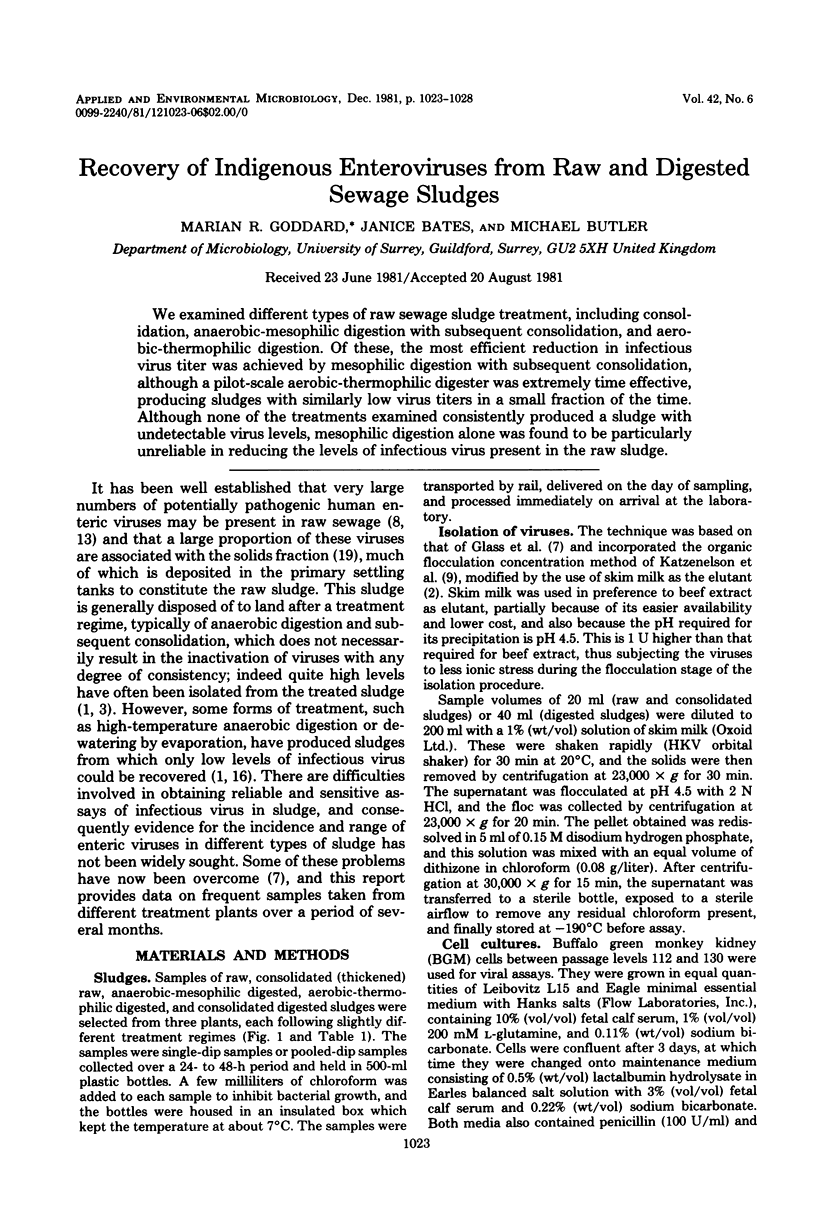

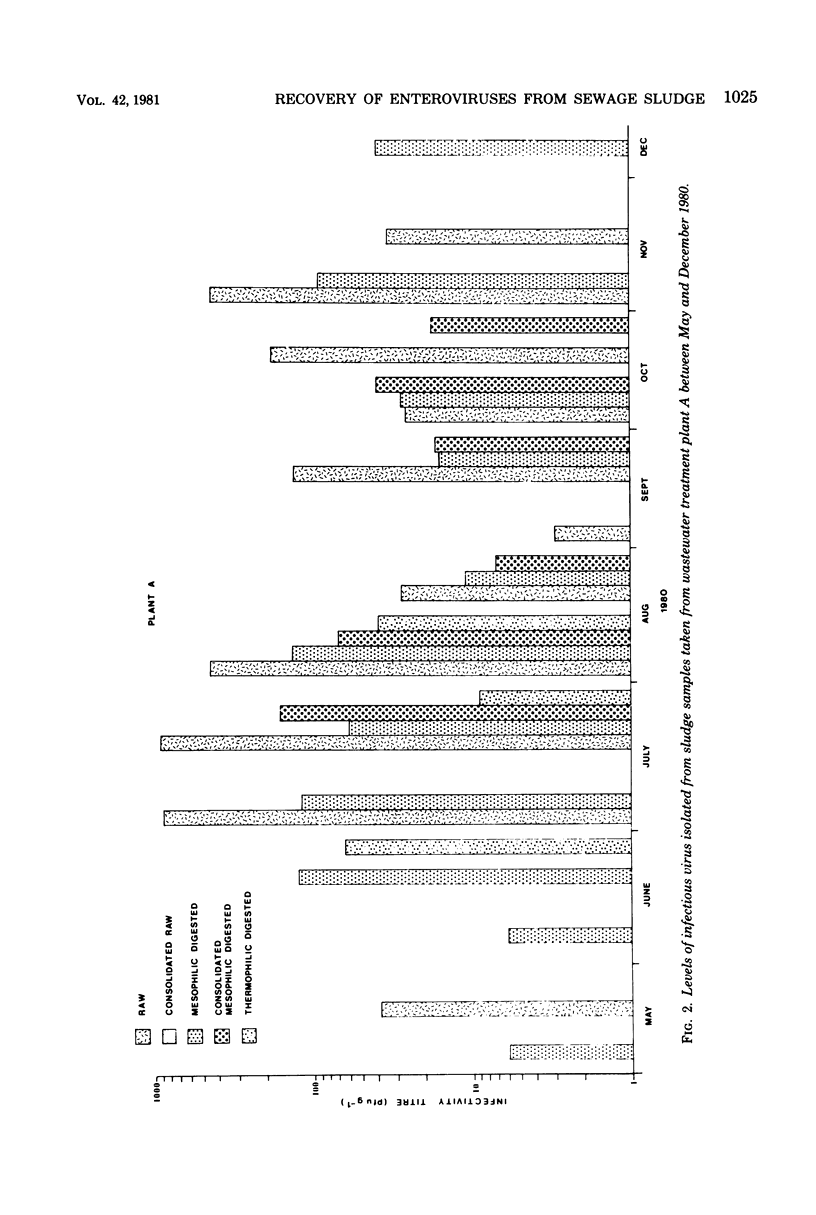
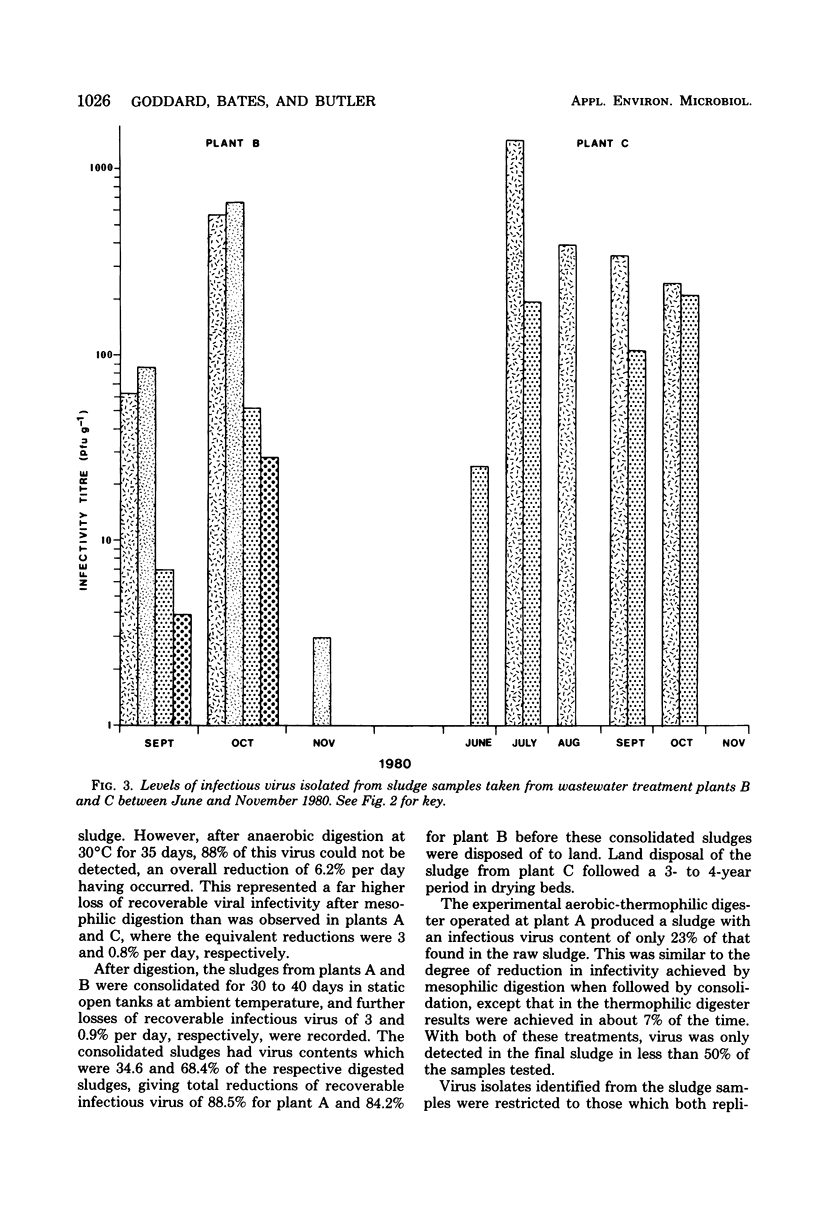
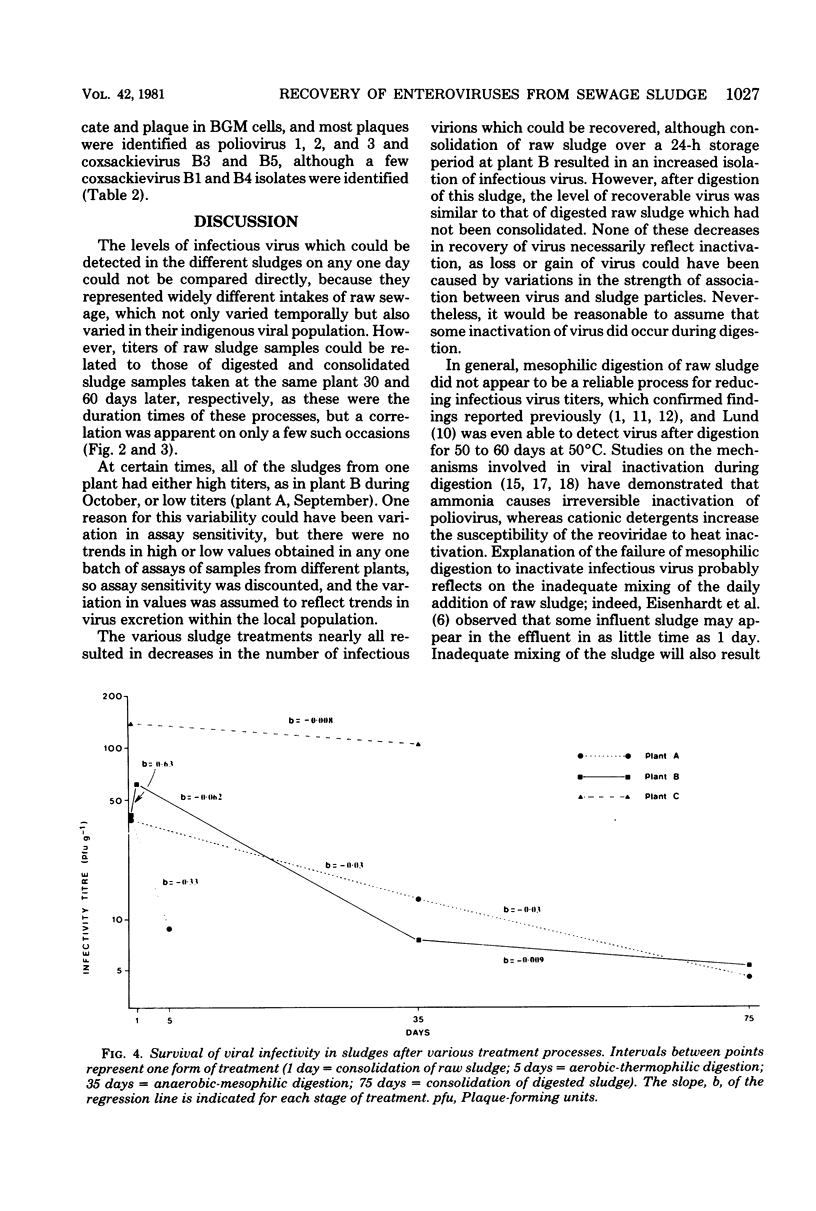
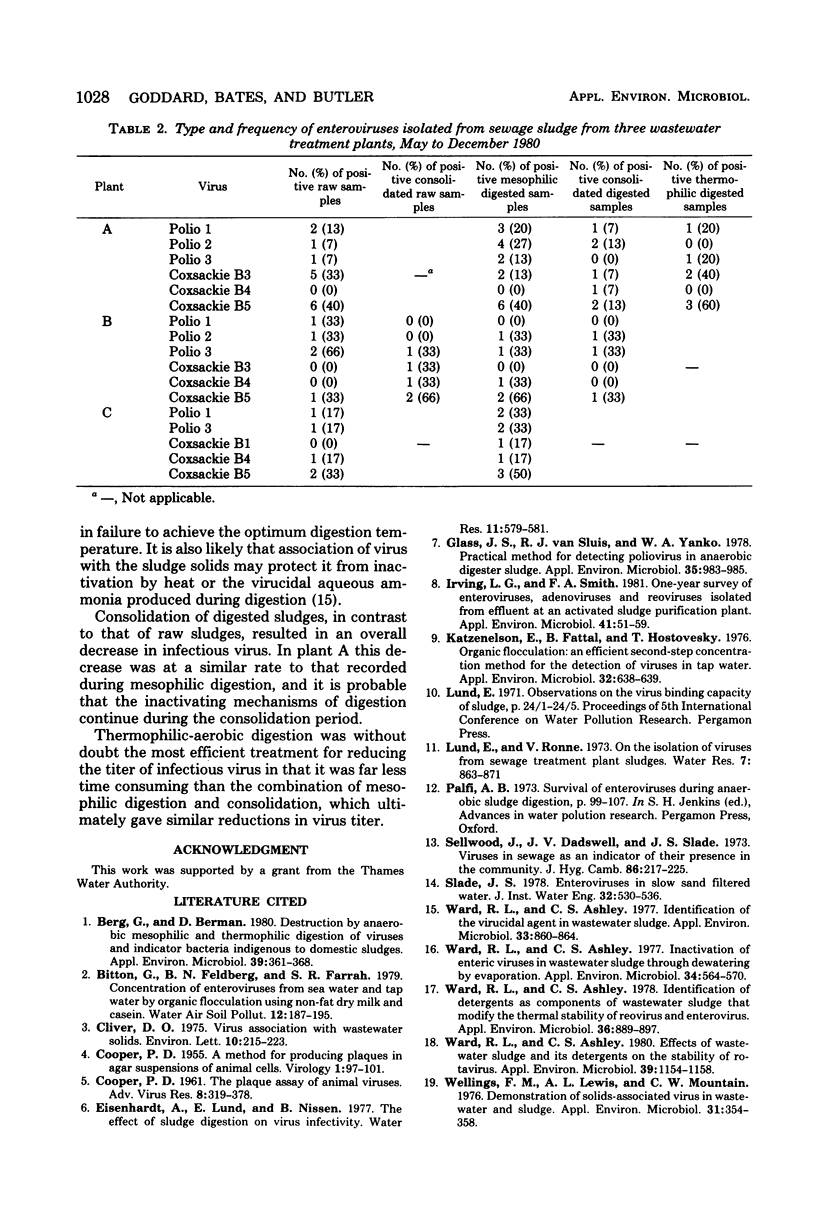
Selected References
These references are in PubMed. This may not be the complete list of references from this article.
- Berg G., Berman D. Destruction by anaerobic mesophilic and thermophilic digestion of viruses and indicator bacteria indigenous to domestic sludges. Appl Environ Microbiol. 1980 Feb;39(2):361–368. doi: 10.1128/aem.39.2.361-368.1980. [DOI] [PMC free article] [PubMed] [Google Scholar]
- COOPER P. D. The plaque assay of animal viruses. Adv Virus Res. 1961;8:319–378. doi: 10.1016/s0065-3527(08)60689-2. [DOI] [PubMed] [Google Scholar]
- Cliver D. O. Virus association with wastewater solids. Environ Lett. 1975;10(3):215–223. doi: 10.1080/00139307509435823. [DOI] [PubMed] [Google Scholar]
- Glass J. S., Van Sluis R. J., Yanko W. A. Practical method for detecting poliovirus in anaerobic digester sludge. Appl Environ Microbiol. 1978 May;35(5):983–985. doi: 10.1128/aem.35.5.983-985.1978. [DOI] [PMC free article] [PubMed] [Google Scholar]
- Irving L. G., Smith F. A. One-year survey of enteroviruses, adenoviruses, and reoviruses isolated from effluent at an activated-sludge purification plant. Appl Environ Microbiol. 1981 Jan;41(1):51–59. doi: 10.1128/aem.41.1.51-59.1981. [DOI] [PMC free article] [PubMed] [Google Scholar]
- Katzenelson E., Fattal B., Hostovesky T. Organic flocculation: an efficient second-step concentration method for the detection of viruses in tap water. Appl Environ Microbiol. 1976 Oct;32(4):638–639. doi: 10.1128/aem.32.4.638-639.1976. [DOI] [PMC free article] [PubMed] [Google Scholar]
- Sellwood J., Dadswell J. V., Slade J. S. Viruses in sewage as an indicator of their presence in the community. J Hyg (Lond) 1981 Apr;86(2):217–225. doi: 10.1017/s0022172400068947. [DOI] [PMC free article] [PubMed] [Google Scholar]
- Ward R. L., Ashley C. S. Effects of wastewater sludge and its detergents on the stability of rotavirus. Appl Environ Microbiol. 1980 Jun;39(6):1154–1158. doi: 10.1128/aem.39.6.1154-1158.1980. [DOI] [PMC free article] [PubMed] [Google Scholar]
- Ward R. L., Ashley C. S. Identification of detergents as components of wastewater sludge that modify the thermal stability of reovirus and enteroviruses. Appl Environ Microbiol. 1978 Dec;36(6):889–897. doi: 10.1128/aem.36.6.889-897.1978. [DOI] [PMC free article] [PubMed] [Google Scholar]
- Ward R. L., Ashley C. S. Identification of the virucidal agent in wastewater sludge. Appl Environ Microbiol. 1977 Apr;33(4):860–864. doi: 10.1128/aem.33.4.860-864.1977. [DOI] [PMC free article] [PubMed] [Google Scholar]
- Ward R. L., Ashley C. S. Inactivation of enteric viruses in wastewater sludge through dewatering by evaporation. Appl Environ Microbiol. 1977 Nov;34(5):564–570. doi: 10.1128/aem.34.5.564-570.1977. [DOI] [PMC free article] [PubMed] [Google Scholar]
- Wellings F. M., Lewis A. L., Mountain C. W. Demonstration of solids-associated virus in wastewater and sludge. Appl Environ Microbiol. 1976 Mar;31(3):354–358. doi: 10.1128/aem.31.3.354-358.1976. [DOI] [PMC free article] [PubMed] [Google Scholar]


